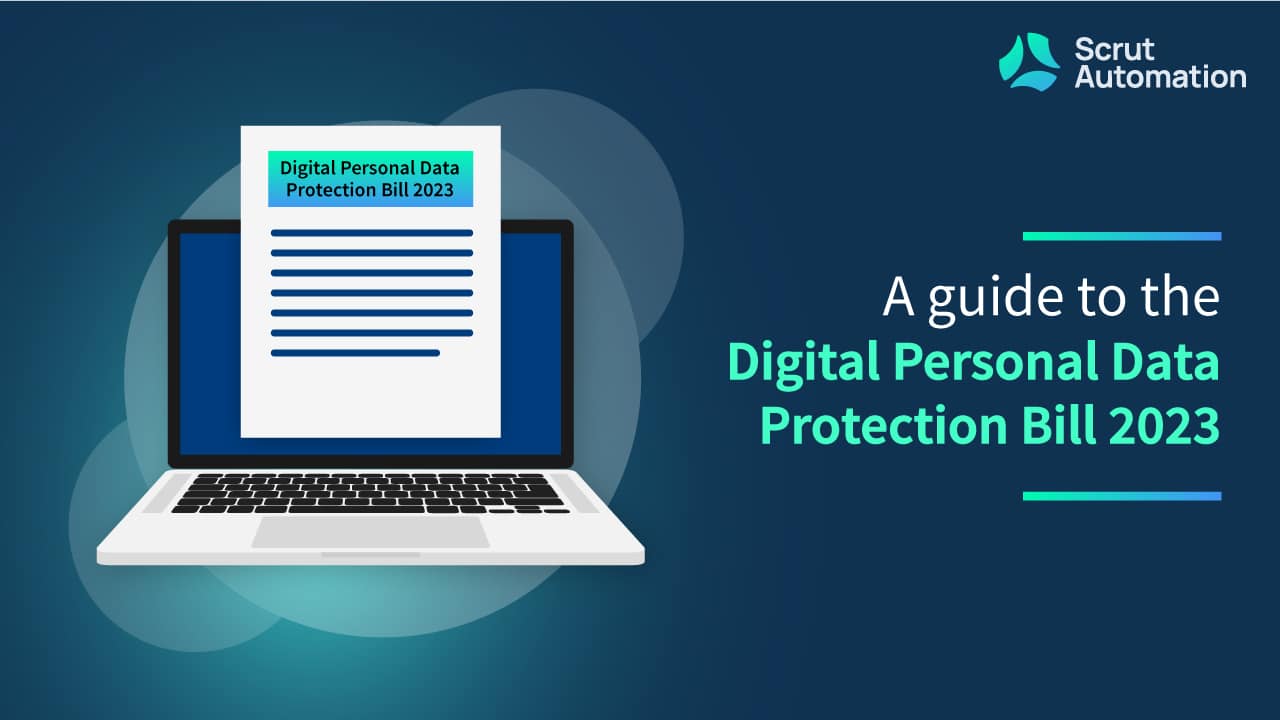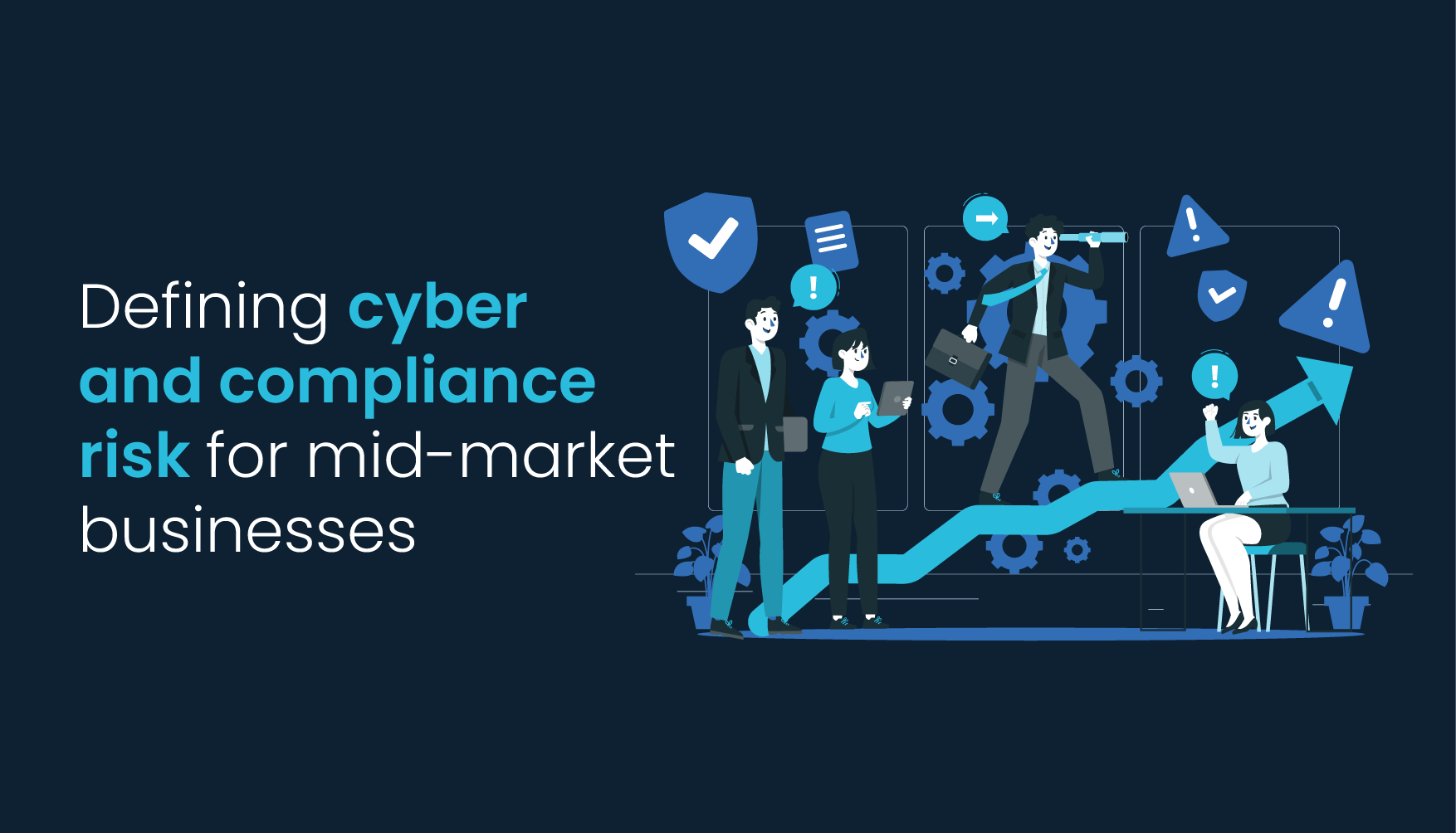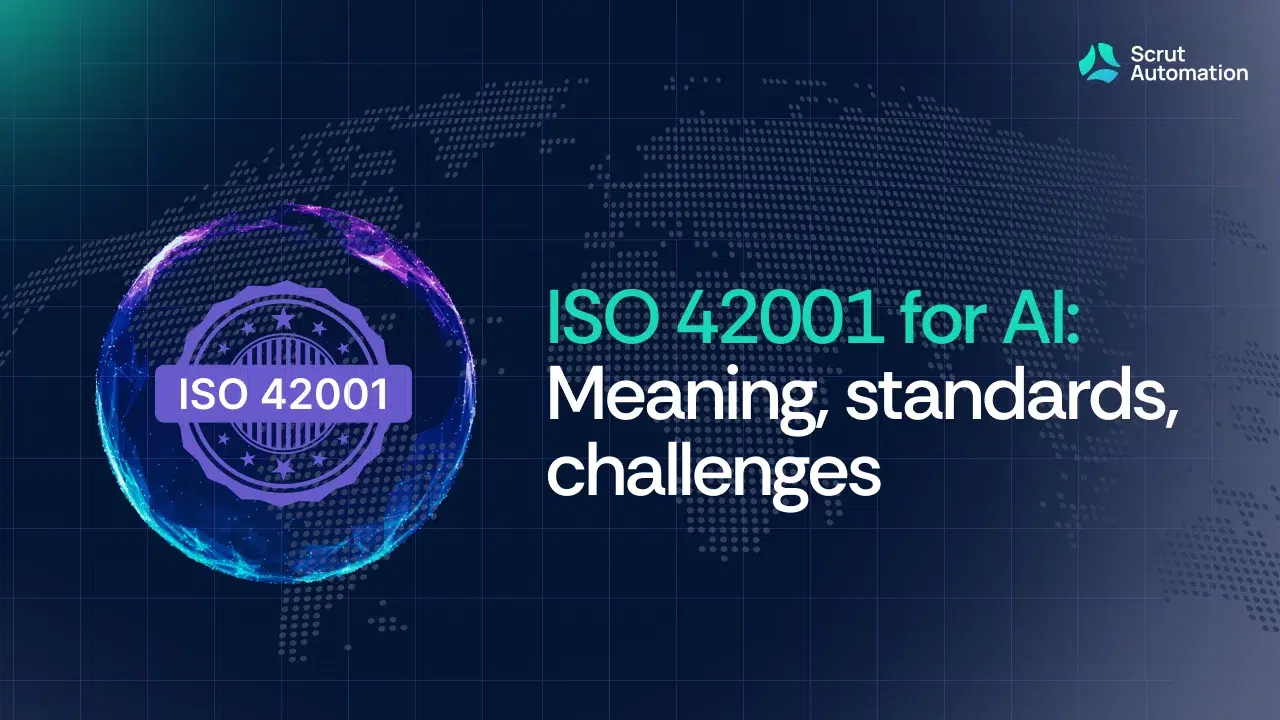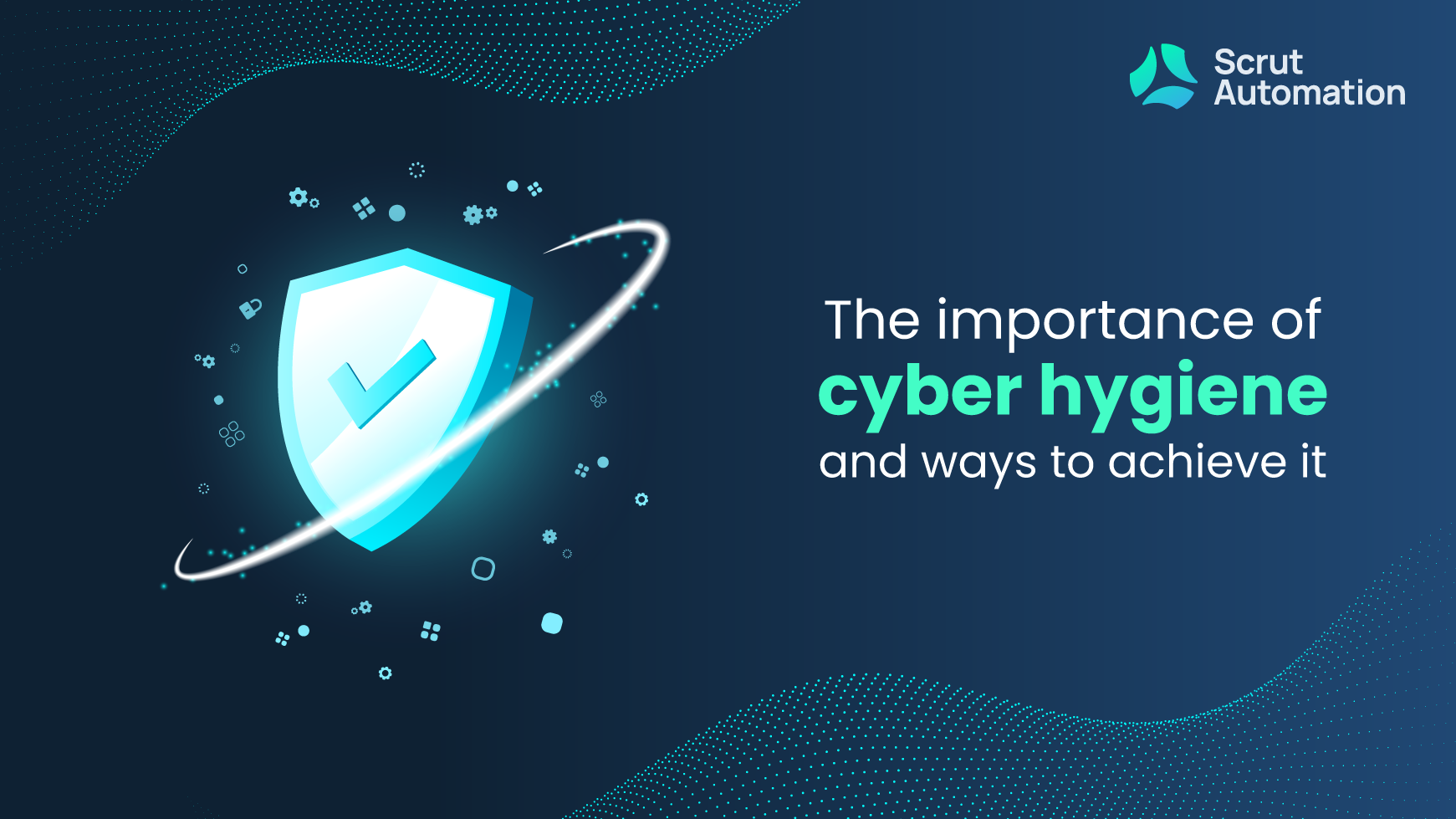Cyber threats are rising every single day, and a majority of organizations are becoming more vigilant toward them. However, they tend to narrow down their visions to the technical aspects of cybersecurity and compliance. But what they often neglect is the need to be proactive and use tools to focus on the human aspects of cyber governance.
Looking through the technical aspects and magnifying them can’t guarantee security in an organization, but adopting a proactive role in cyber governance using a control-focused approach could lead to enhanced security. Let’s understand what cyber governance is before moving on to the strategy of the control-focused approach.
What is cybersecurity governance?
Cybersecurity governance is the culmination of policies, processes, procedures, and practices formed and implemented by the organization to manage and mitigate cybersecurity risks. Cybersecurity governance is dependent on the principles of confidentiality, integrity, and availability of the information as well as adherence to standards and frameworks applicable to the organization.
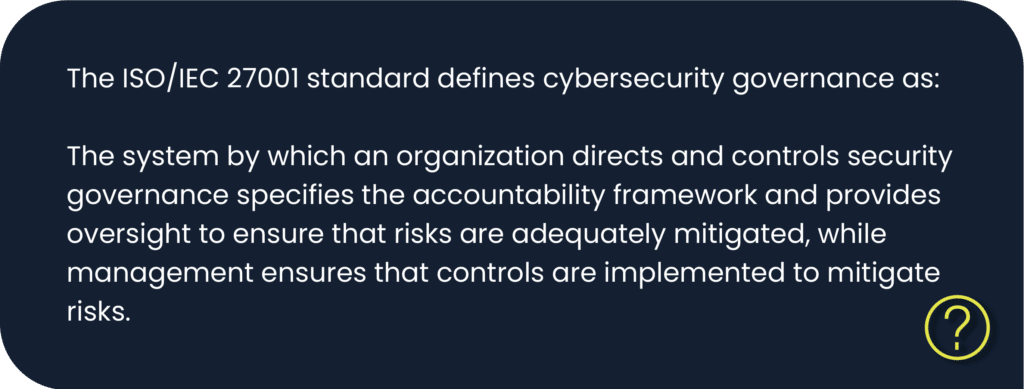
The system by which an organization directs and controls security governance specifies the accountability framework and provides oversight to ensure that risks are adequately mitigated, while management ensures that controls are implemented to mitigate risks.
Cybersecurity governance is a critical component of the GRC program. Without stringent governance policies and procedures, the whole fabric of the GRC program can be ripped apart. Well-formed control-focused cyber governance can enhance the cybersecurity posture of the organization. To focus on control-focused cybersecurity governance, let’s first understand what control-focused strategies are.
What are internal control strategies?
Control-focused strategies or internal control strategies refer to prioritizing the implementation of controls to mitigate cybersecurity risks. These internal controls include both technical and non-technical measures implemented for mitigating risks.
This approach aims to establish a well-designed, comprehensive program that helps the organization proactively identify, assess, manage, and mitigate cybersecurity risks. Instead of managing the risks after the incidents, this program focuses on preventing the risks and discovering vulnerabilities beforehand.
An internal control based approach shifts the entire cybersecurity paradigm from reactive to proactive.
In this article, we will discuss the ways in which an internal control strategy for cybersecurity governance protects the organization.
Components of a robust internal control cybersecurity governance policy
In our previous article, we discussed the meaning, benefits, types, and components of internal controls. This article focuses on the relationship between internal controls and cybersecurity governance.
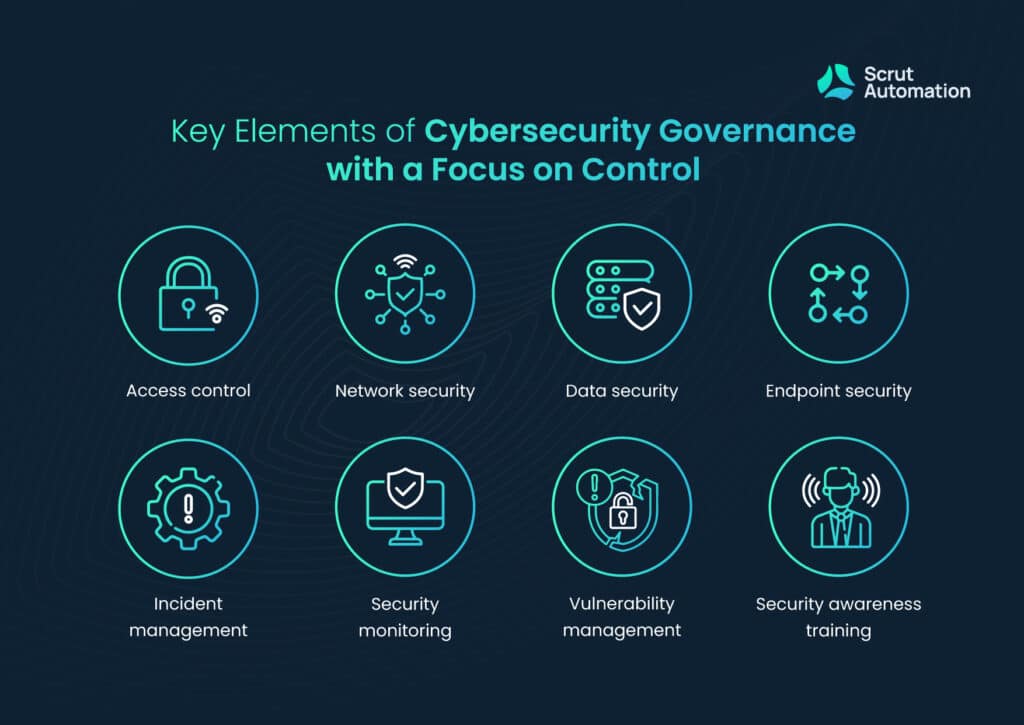
Let us now discuss the eight components of internal controls based cybersecurity governance to help you implement it in your organization.
1. Access control
Access control refers to the process of limiting access to sensitive data or information to authorized users only. This method involves sharing information on a need-to-know basis only. Access is provided to the authorized user via passwords, multi-factor authentication (MFA), and role-based controls to stop all other users from accessing the information.
2. Network security
Network security is nothing but protecting the organization’s network from unauthorized access. Network infrastructure includes hardware such as routers, switches, hubs, repeaters, gateways, bridges, and modems. Network infrastructure is secured using firewalls, intrusion detection systems, and network segmentation.
3. Data security
The control-focused strategy features two types of data security – protecting data in motion and data at rest. Data in motion is the data transferred from one node to another over an unsecured network, such as the Internet. This data is protected using SSL/TLS certificates. While data at rest is secured using encryption, data loss prevention techniques, and data classification.
4. Endpoint security
Endpoint security refers to securing end-user devices such as laptops, computers, and mobile phones from unauthorized access. Every endpoint has its own security measure like anti-malware software, host-based intrusion prevention system, and device encryption.
5. Incident management
In a cybersecurity context, an incident refers to a breach in security by a malicious actor. Cybersecurity governance includes the detection, mitigation, assessment, and remediation of an incident.
6. Security monitoring
Continuous monitoring involves constant verification of the organization’s systems and network for security threats and vulnerabilities using tools such as security information and event management (SIEM) systems.
7. Vulnerability management
Vulnerabilities are the weaknesses or opportunities in the organization’s systems, software, or hardware that can be exploited by the threat actors entering the organization’s network. Organizations should detect and patch the vulnerabilities as soon as they arise by continual monitoring. Failing to do so can increase the chances of cyber attacks.
8. Security awareness training
All the organization’s employees, from IT and non-IT departments, should be trained in the best cybersecurity practices. They should know how to identify potential threats and how to avoid them.
Let’s take a look at the most common challenges organizations face while implementing an internal control based cyber governance strategy.
What are the challenges in implementing an internal control-based cybersecurity governance approach?
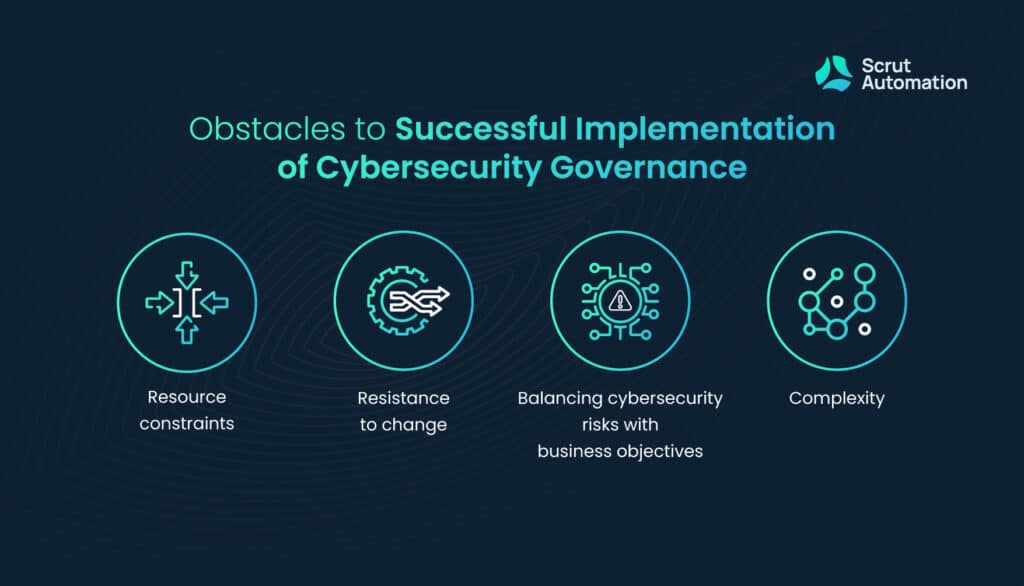
Organizations face many challenges in implementing internal controls for cyber governance. Some of the most common challenges are:
1. Resource constraints
To implement this approach, organizations require significant amounts of resources, including financial, personnel, and time. Before actually implementing the strategies, the organization should clearly understand how it will bring in the resources for the implementation.
2. Resistance to change
When organizations have been in business for a number of years, the employees, as well as the management, are set in their ways and generally resistant to change. So, if the organization wants to change its approach, it will have to carefully communicate the importance of cyber governance to its employees. It should be willing to supply proper training and support to employees to ensure they comply with the new policies.
3. Balancing cybersecurity risks with business objectives
Any organization has certain main objectives for which it was established. Now, if the organization pivots toward cybersecurity instead of its main objectives, it will fail in essence. So the organization should align cybersecurity goals with its main objectives. The measures should be user-friendly to avoid disturbing its principal business activities.
4. Complexity
This approach requires a deep understanding of the organization’s data, systems, and assets. Organizations must carefully consider the complexity of their systems before implementing the strategy. The program should address all potential vulnerabilities and threats clearly.
Understanding it with an example will make these concepts simpler to understand.
Case study of internal control failure – the Equifax data breach
So what happens when there are failures in internal controls? Failure in internal controls can lead to a data breach, non-compliance, and loss of reputation. Understanding it with an example will be easier.
Equifax is a credit reporting agency that collects and stores personal and financial information, including social security numbers, birth dates, and addresses of millions of customers. The Equifax data breach was a significant cyber attack that happened in 2017, affecting the data of approximately 143 million people.
The initial attack happened via consumer compliant web portal. There was a widely known vulnerability in the portal, and Equifax had failed to patch it. The failure to patch the vulnerability was the first failure of internal controls.
The second failure – a lack of data segmentation. The attackers were able to move from the web portal to other servers as the data was not segmented adequately.
Plus, the data, including usernames and passwords, were stored in plain text files allowing the attackers to move forward. The third failure was the failure to encrypt the data appropriately.
The fourth failure was when Equifax failed to renew its encryption certificate. Due to this, the attackers could pull data from the organization for months.
In the aftermath of the breach, Equifax faced significant legal, financial, and reputational damage. The organization was subject to numerous class action lawsuits and regulatory investigations, and it ultimately agreed to a settlement of $700 million to compensate affected consumers and implement cybersecurity measures to prevent future breaches.
The Equifax data breach is an example of how not having the right internal control based approach can affect an organization. It highlights the importance of cybersecurity measures and prioritization of cybersecurity as a critical component of a business.
Checklist for implementing an internal control-focused approach to cybersecurity governance
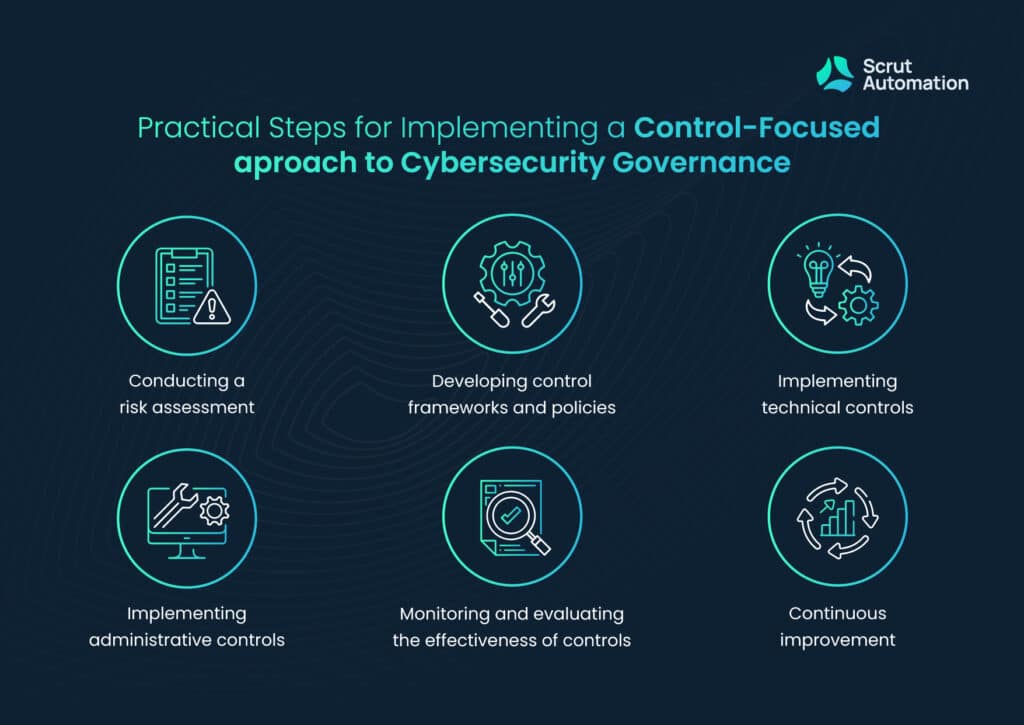
Implementing an internal control based approach to cybersecurity governance is a long process that requires a systematic and organized approach. By focusing on the steps given below, an organization can implement this approach to cyber governance with ease.
1. Conducting a risk assessment
The first step is to conduct risk assessments in order to identify and detect cybersecurity threats and vulnerabilities. Every aspect of the organization must be included in risk assessment, including hardware, software, firmware, data, and people. A thorough assessment can weed out vulnerabilities.
2. Developing control frameworks and policies
Based on the results of the risk assessment, the organization should build policies and procedures that address vulnerabilities and cyber threats. The policy should cover all the components of an internal control approach given above.
3. Implementing technical controls
Technical controls include firewalls, intrusion detection and prevention systems, encryption, and multi-factor authentication implemented in sync with the cybersecurity policies and procedures of the organization.
4. Implementing administrative controls
Administrative controls, like employee training, security awareness programs, and incident response plans, are crucial to establishing control-focused corporate governance. But always remember, the administrative controls should align with the organizational policies and procedures.
5. Monitoring and evaluating the effectiveness of controls
The organization should continuously monitor its cybersecurity measures to ensure they are relevant in the changing times. It should keep an eye on what is happening in the world to know the current threat landscape. The monitoring involves penetration testing, vulnerability scans, and security assessments.
6. Continuous improvement
The organization should continuously improve its stance based on monitoring and evaluation. The policies and procedures should be updated, the vulnerabilities should be patched, and new technical knowledge should be implemented to keep the organization secure from cyber attacks.
Summing up cybersecurity governance: how control-focused strategies protect organizations
Managing business organizations was never an easy task. However, today’s market calls for special attention to the cybersecurity of the organization in addition to its main functions. An internal control based approach to cybersecurity governance helps the organization form and implement policies to mitigate risks and prevent cyber attacks.
Although there are many challenges in implementing this strategy, failing to implement strong internal controls can cause more harm than one can comprehend. We saw an example of internal controls’ failure and how it can affect the organization. So, it is advisable for organizations to implement internal controls and shift to an internal control based approach to cybersecurity governance.
Scrut offers a bouquet of services to organizations that want to focus on compliance and cybersecurity. Talk to our experts today to learn more.
FAQs
It can help protect organizations by providing a comprehensive set of security measures that can detect and prevent cyber-attacks. By implementing these controls, organizations can reduce the likelihood and impact of cyber attacks.
The challenges associated with a control-focused approach to cybersecurity governance are lack of resources, user resistance, complexity, and creating a balance between the main goals of the organization and cybersecurity.
Organizations can ensure that their control-focused cybersecurity governance approach is effective by regularly assessing and testing their security controls, staying up-to-date with the latest cybersecurity threats and trends, and continuously improving their cybersecurity measures.

